Many of the factors behind home energy costs in Ontario are beyond our control. Natural gas and electricity are commodities, after all, and the rates change quarterly with supply and demand. That said, if you’ve found your heating bills unexpectedly high this winter, the problem could be closer to home.
A sharp increase in the cost of heating your home is often a sign that part of your heating system isn’t working as intended. Your heating bill could also be higher because your house isn’t keeping the warmth in as well as it used to (which means you’ll have the opposite problem come summer!)
If you can’t trace the increase to rising energy prices, and your heating demand hasn’t changed since last year, it’s time to look at other potential causes.
Your Heating System Isn’t Operating at Peak Performance
When you notice your heating bill’s higher than usual this year, the first question to ask is this:
How long as it been since your last furnace tune-up?
If you’re like most homeowners, you don’t think much about the inner workings of your home’s heating system. It either works, or it doesn’t. But there’s a lot going on beneath the surface: pipes, safety switches, venting, flame sensors and other components that work in tandem to produce a safe, steady supply of heat.
In that way, it’s not so different from your vehicle.
Even a top-performance sports car can only go so far before it needs a tune-up. If you find that a tank of gas isn’t taking your vehicle as far as it used to – that your car is suddenly less fuel-efficient – you know that it’s time to look under the hood.
The same goes for your forced air heating system. If part of the system isn’t functioning correctly, or an aging system hasn’t been properly maintained, it will lose its efficiency over time. And a sudden rise in your heating bills could be a warning sign for furnace issues.
Warm Air is Escaping from Your Home
You might picture your house as a well-wrapped, tightly-sealed box. Truth is, there are numerous points throughout the home’s envelope that could allow air to leak through, and these gaps can contribute to rising energy bills.
Windows and doors are common culprits for heat loss. A single pane of glass can lose almost ten times as much heat as the same area of insulated wall – and it will lose even more if the frame isn’t properly sealed.
Other common leak sites include fireplace dampers, attic hatches, dryer vents, electrical outlets, and mail slots. According to ENERGY STAR, if you added up all the small gaps throughout a typical home’s envelope, it would equal the impact of leaving a window a wide-open all winter.
That’s a lot of wasted heat.
If your heating bill seems unusually high this year, and your home’s envelope has changed since last winter (you constructed a new wall or installed a new set of windows, for instance), you could be dealing with a substantial air leak.
Time for a Furnace Tune-Up
If your heating bill is higher than usual this year, it’s probably time for a tune-up.
Here in Ontario, heating accounts for two-thirds of the average’s family’s energy costs. Don’t let your equipment drive those costs even higher.
Investing in preventative furnace maintenance is the single best way to keep your system running efficiently. Learn more about what a professional furnace tune-up and safety check should include, or book your tune-up in the Greater Toronto Area today.







